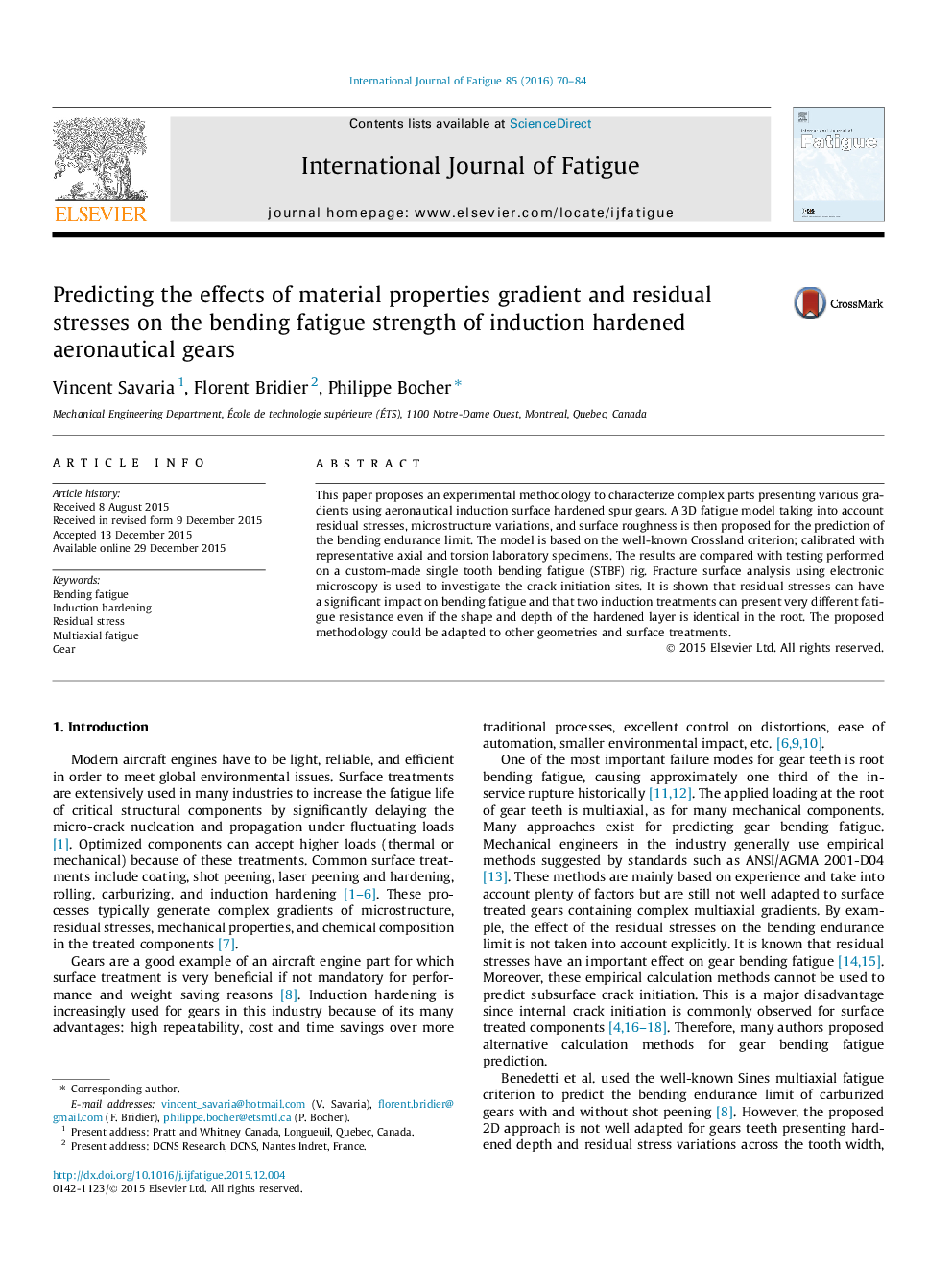| Article ID | Journal | Published Year | Pages | File Type |
|---|---|---|---|---|
| 778162 | International Journal of Fatigue | 2016 | 15 Pages |
•Microstructure, hardness and residual stress effects on fatigue are studied.•The bending fatigue endurance limit of induction hardened gears is predicted.•Model predictions are compared to experimental single tooth bending fatigue tests.•The proposed model provides reasonable predictions of the bending endurance limit.•The crack initiation location is more challenging to predict with such model.
This paper proposes an experimental methodology to characterize complex parts presenting various gradients using aeronautical induction surface hardened spur gears. A 3D fatigue model taking into account residual stresses, microstructure variations, and surface roughness is then proposed for the prediction of the bending endurance limit. The model is based on the well-known Crossland criterion; calibrated with representative axial and torsion laboratory specimens. The results are compared with testing performed on a custom-made single tooth bending fatigue (STBF) rig. Fracture surface analysis using electronic microscopy is used to investigate the crack initiation sites. It is shown that residual stresses can have a significant impact on bending fatigue and that two induction treatments can present very different fatigue resistance even if the shape and depth of the hardened layer is identical in the root. The proposed methodology could be adapted to other geometries and surface treatments.
